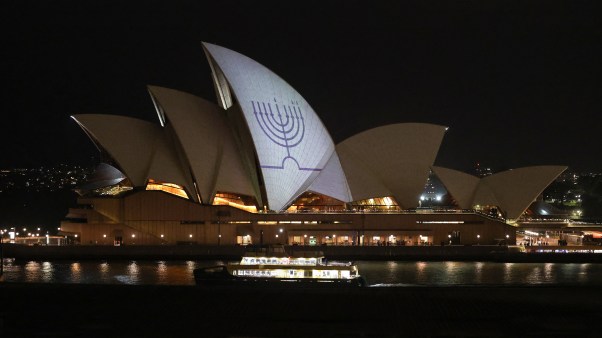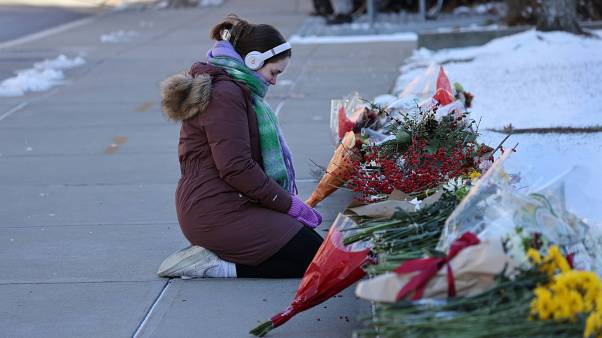As Christians, we spend weeks, even months, preparing for Christmas. In the United States, at least, we typically save up precious vacation time so that we can spent the Christmas season with far-flung friends and family. But the Lenten season, those 40 days (excluding Sundays) leading up to Easter, doesn’t hold as much cultural or religious significance for most believers, as a recent ChristianityToday.com article pointed out.In fact, a recent U.S. District Court rulingupheld the right of workers in Indiana to observe Good Friday as a legal holiday partly because many in that state see Good Friday merely as “a Friday falling in the middle of the long vacationless spring—a day which employees should take off to rejuvenate themselves.” The judge concluded that “for Indiana, the holiday has absolutely no religious significance.”Sadly, this indictment holds true for many beyond the borders of the Hoosier State. And though we as Christians see Holy Week as more than just another Friday, most of us don’t seem to take Easter as seriously as we do Christmas.The Web can’t magically turn the Easter season into a religious observance on par with Christmas, but it is loaded with resources that can help any Christian gain a much deeper understanding of the ‘reason for the season.’
The Lenten Season
In the West, the Lenten season traditionally begins 40 weekdays before Easter on Ash Wednesday. According to Britannica.com, Lent began early in the history of the church:It was the practice in Rome for penitents to begin their period of public penance on the first day of Lent. They were sprinkled with ashes, dressed in sackcloth, and obliged to remain apart until they were reconciled with the Christian community on Maundy Thursday, the Thursday before Easter. When these practices fell into disuse (somewhere between A.D. 700 and 900), the beginning of the penitential season of Lent was symbolized by placing ashes on the heads of the entire congregation.A large collection of Lenten links is available at The Text This Week, a site that also features a series of articles and other links tied to the liturgical year. The site includes, among other resources, Meditations and Prayers for Lent and Easterand an excellent brief articleabout the reasons why Christians fast and “give up things” during Lent.Lent has traditionally been a time where Christians have used spiritual exercises, especially prayer, to gain a great sense of God’s presence in their lives. The Web offers an excellent assortment of meditations for Lent. Some of the best include: Meditations for Lent, Meditating on the Passion of Jesus, and Lent 2000.
Holy Week
As the Lenten season winds its way toward Easter Sunday, it soon reaches Palm Sunday, which is celebrated the week before Easter and begins Holy Week. Palm Sunday is the day when Jesus entered Jerusalem on a donkey, and palm branches, symbolic of Jewish nationalism, were laid along his path into the city.The Catholic Encyclopediaand Britannica.comoffer detailed histories of Palm Sunday, with Britannica.com focusing more on traditions associated with the day.The Last Supper, Jesus’ last meal with his disciples before his crucifixion and resurrection, took place on Thursday evening of Holy Week, a day now known as Maundy Thursday. Historical background on the traditional location of the Last Supper may be found at Via Crucis, which also has photos. According to Jaime L. Murrayof Notre Dame, “This meal was Jesus’ pledge that God would bring all of his followers to salvation.” More historical information is available at Michael Fraser’s Egeria and The Fourth Century Liturgy of Jerusalem.For artists’ recreations of the Last Supper, see works from Leonardo Da Vinci, Salvador Dali, and Andy Warhol. (One legendhas it that Da Vinci’s model for Judas Iscariot revealed himself to Leonardo as Christ himself!)After the Last Supper, Jesus and his disciples went to Gethsemane, where Jesus was publicly betrayed by Judas and arrested. He was then put on trialbefore Jewish and Roman authorities, and then crucified on Friday. For a multimedia presentation of the death of Christ, see the Interactive Passion History.
The Crucifixion and Resurrection
It was once fashionable to suggest that crucifixion wasn’t a standard method of execution in first-century Palestine, which would mean the Gospels were mistaken. However, these doubts have been put to rest by the discovery of the body of a crucified man which has been dated to the time of Christ. The body reveals much about how Jesus’ crucifixion was probably carried out. (A related video account of Jesus’ last days, How Jesus Died: The Final 18 Hours, is available from Vision Video.)There have also been those who claimed that Jesus didn’t die on the cross, but merely swooned. The so-called swoon theory, however, has been refuted by medical evidence. For a detailed discussion of the evidence that Jesus truly died on the cross, see ” On the Physical Death of Jesus Christ,” a report that appeared in the Journal of the American Medical Associationin 1986. According to the authors, “Modern medical interpretation of the historical evidence indicate that Jesus was dead when taken down from the cross.”The wonder of the Easter season is the celebration of the resurrection of Jesus from the dead. Apologist William Lane Craigoffers a compelling defense of Jesus’ bodily resurrection on his home page. A page at ChristianAnswers.netcomplements Craig’s site by providing answers to a number of the common questions surrounding the resurrection of Christ; it ably handles the objections of skeptics.For a defense of the reliability of the accounts of Jesus’ resurrection, see A Harmony of the Resurrection Accounts. And his isn’t the only resurrection making the news lately. A recent storyfrom Charisma News Service tells of a Buddhist monk who was converted to Christianity and raised from the dead, in the process leading many in Myanmar (Burma) to faith in Christ.
Easter and the Arts
Easter is a time to celebrate, and the Web, once again, can help. Like great art, great music can capture undiscovered aspects of the Easter season.For a nice collection of Easter music and hymns, see The Easter Page, where there is also a link to Preaching Easter Hymns. In fact, Handel’s Messiah, which is normally associated with Christmas, actually has two of its three parts dedicated to Christ’s death and resurrection and was originally intended as a Lenten piece.Matt Donnelly (mdonnelly@truthmail.com) is the assistant editor of Christianity Online magazine.
Copyright © 2000 Christianity Today. Click for reprint information.








